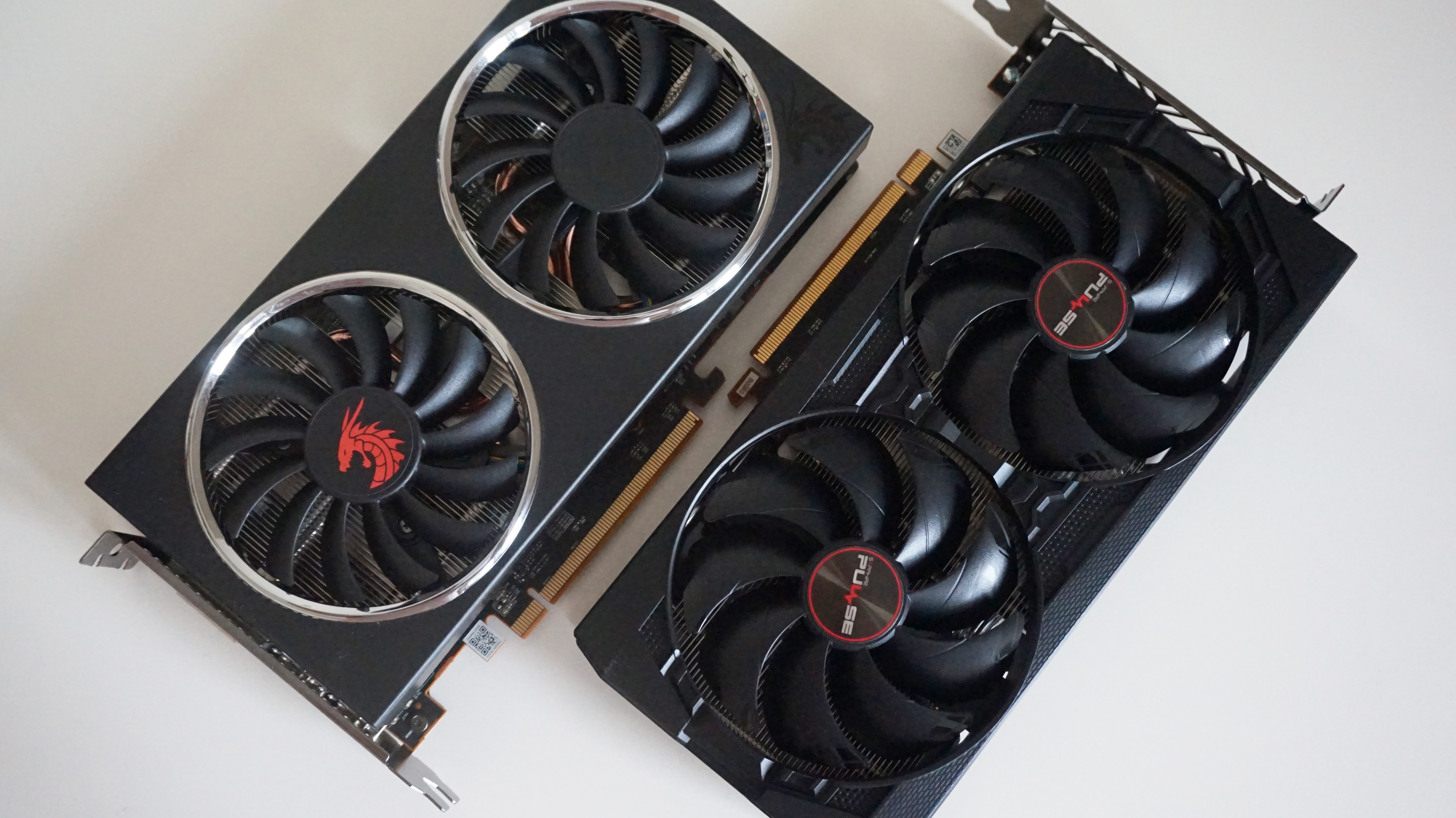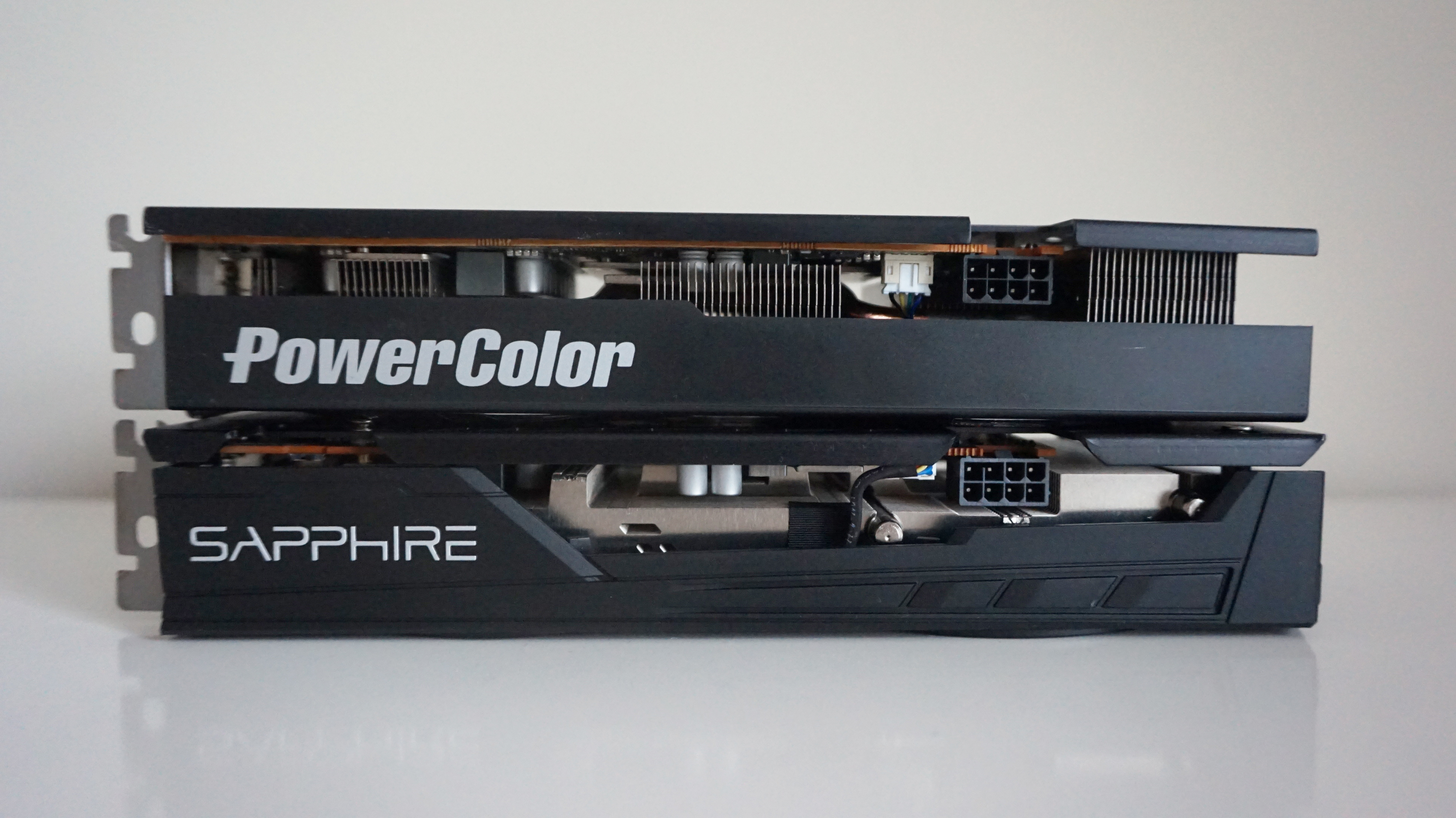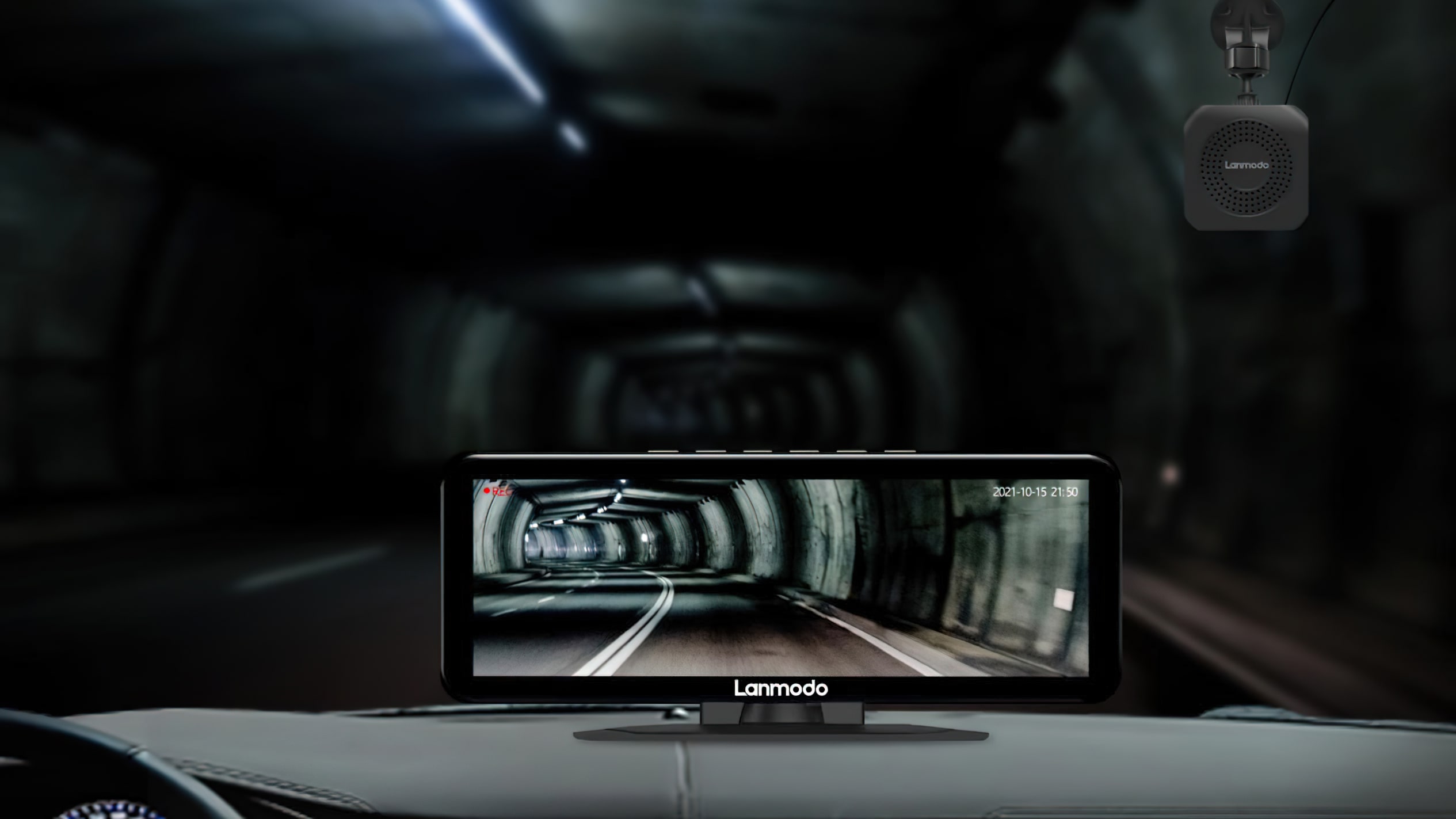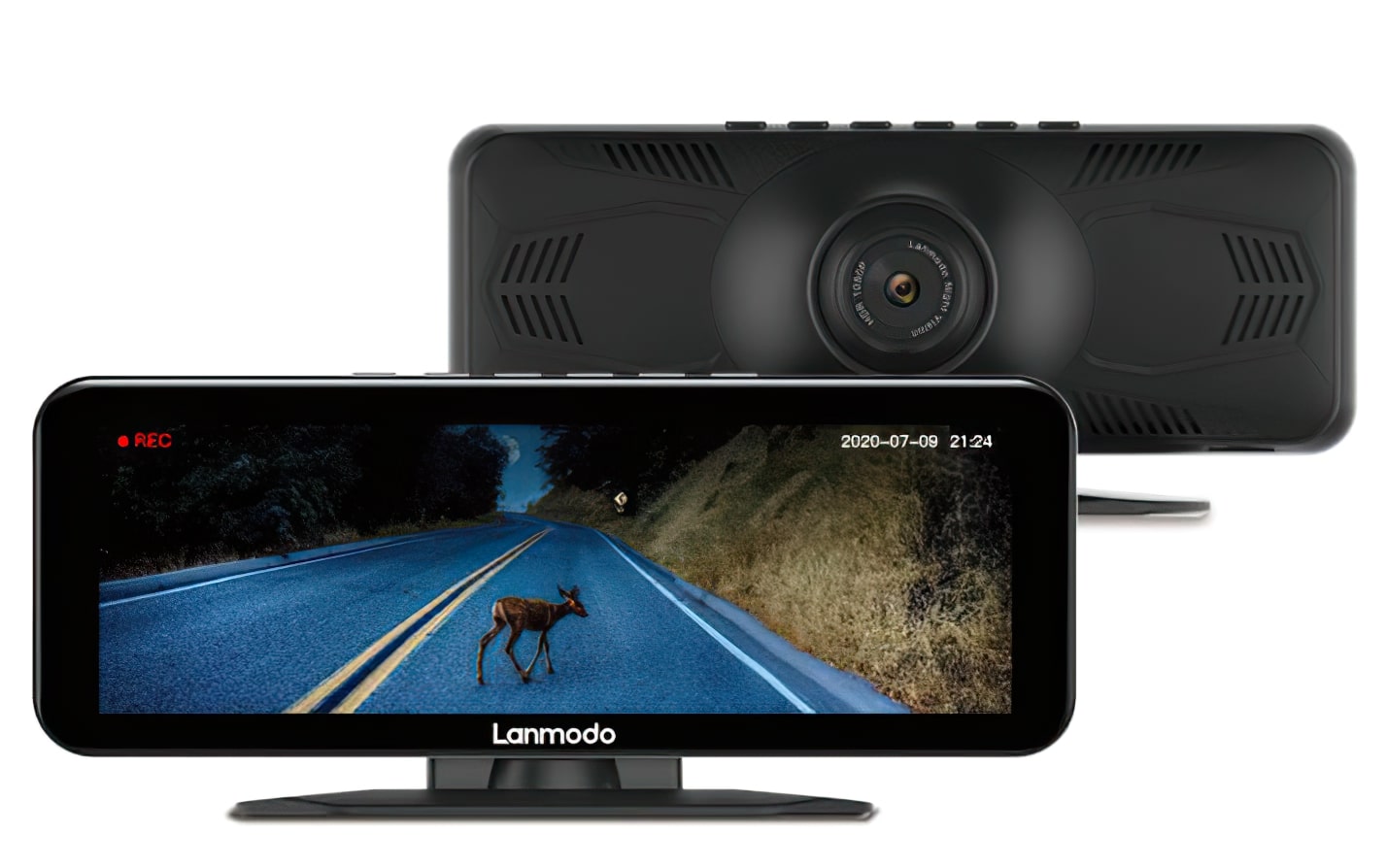
When AMD first introduced their new finances graphics card, the Radeon RX 5500, again at first of October, I used to be anticipating evaluation samples to comply with swiftly after it. They didn’t. Turns out, the RX 5500 isn’t really a graphics card you should buy off the shelf. Instead, the one place you’ll discover them is inside a pre-built PC. Why? Who is aware of. Perhaps it’s so you may really feel a teensy bit higher about choosing their sizzling off the press Radeon RX 5500 XT as an alternative, which you’ll be able to go and purchase proper now in each 4GB and 8GB GDDR6 reminiscence variants for £160 / $170 and £180 / $200.
Take a better have a look at the RX 5500 XT’s specs, nonetheless, and also you is likely to be questioning the place the XT bit is available in. After all, if AMD’s higher-end RX 5700 and RX 5700 XT are something to go by, the “XT” is successfully AMD’s reply to Nvidia’s “Super” identify, signifying a superior model of its non-XT sibling. Yet, the RX 5500 and RX 5500 XT not solely share the identical variety of compute models (22) and the identical variety of stream processors (1408), however additionally they have the identical ‘game’ clock of 1717MHz, in addition to an similar max clock pace of 1845MHz, too (game clock being AMD’s new time period for the standard clock pace you’ll see when enjoying games). It’s all sounds a bit fishy should you ask me, however fact be advised, it’s not likely that essential. What issues is that this card kicks Nvidia’s GTX 1650 in the midst of subsequent week and is just about neck and neck with their equally priced GTX 1660 playing cards. Here’s wot I feel.
Now, I do know there’s an elephant within the room right here. “What about the GTX 1650 Super?” I hear you cry. Alas, I nonetheless haven’t been capable of get my palms on one among these as a result of Nvidia gained’t ship me one themselves and third get together playing cards appear to be in very quick provide. I’m nonetheless hoping to get one earlier than Christmas, however to be trustworthy, I’d be stunned if it made a dent on the RX 5500 XT, as a result of AMD’s new 1080p-oriented GPU is so far in entrance of the common GTX 1650 rival that the Super must pull off a severe last-minute upset to make it even price contemplating at this worth. Yes, each the GTX 1650 and GTX 1650 Super may be had for round a tenner much less proper now at £150 / $160, however the 4GB model of the RX 5500XT has some significantly beefy innards for a budget-facing graphics card, changing the 8GB RX 580 as my new best graphics card advice for ‘what you should actually buy’ for clean, 1080p gaming.
I used to be despatched each a 4GB and 8GB variant of the RX 5500 XT. On the 4GB aspect, we’ve got Sapphire’s Radeon RX 5500 XT Pulse (pictured above, proper), and Powercolor’s Radeon RX 5700 XT Red Dragon (above, left)for the 8GB crowd, that are each on the least expensive finish of their respective classes. For essentially the most half, their efficiency was just about similar, making each playing cards equally good decisions for anybody after 60fps gaming at 1920×1080 on Medium to High graphics settings.
The foremost purpose why you may wish to think about the 8GB model is whenever you wish to push right into a game’s high-quality settings, or step as much as a little bit of 1440p (which the RX 5500 XT is completely able to doing, by the way in which, simply not at significantly top quality settings). Monster Hunter: World and Assassin’s Creed Odyssey‘s max high quality settings, for instance, require greater than 4GB of reminiscence at 1080p, and reminiscence necessities are solely going to get bigger as you progress as much as bigger resolutions.
This was mirrored in my benchmark outcomes, the place the 8GB RX 5500 XT routinely outmanoeuvred its 4GB sibling when enjoying at 1080p on Ultra and Very High and the like, in addition to a few instances at 1440p. As a consequence, the 8GB will naturally supply extra future-proofing for potential PC builders, however should you’re superb sticking with Medium or High settings and don’t have a tendency play quite a lot of ‘big’ games anyway, then the finances acutely aware amongst you’ll nearly actually be superb with the 4GB card.

PowerColor’s RX 5500 XT doesn’t include the identical sort of ports as Sapphire’s model, so be certain the mannequin you choose has the right sort and variety of outputs you want.
Case in level, the 4GB RX 5500 XT nonetheless put in a really admirable efficiency in each Monster Hunter: World and Assassin’s Creed Odyssey at 1080p, averaging round 65fps on High in each. It additionally managed a really playable common of 53fps in Final Fantasy XV on High as I ran up and down the luxurious hills of Duscae (with all Nvidia’s additional results turned off, natch), in addition to 53.5fps on High in Total War: Three Kingdoms – which actually isn’t that dangerous for a £160 / $170 GPU.
I used to be impressed with its efficiency in Shadow of the Tomb Raider, too, the place it averaged 55fps on Highest, albeit with its SMAA anti-aliasing enabled reasonably than its robust SMAA x4. I needed to drop the standard right down to Medium on Metro Exodus to get a clean 63fps common in its built-in benchmark (High was a bit an excessive amount of at 45fps), however it was again up in Ultra territory for each Forza Horizon 4, the place it averaged 72fps at 1080p, and The Witcher III, averaging 59fps on its default Ultra preset, and 68fps after I switched off all of the Nvidia Hairworks stuff.
The 8GB model, in the meantime, put in a really related efficiency, and was usually too shut to essentially name it an considerable distinction. Indeed, the one games the place it actually improved on its 4GB sibling had been Shadow of the Tomb Raider, the place it pushed its common body fee as much as 64fps on Highest with SMAA at 1080p, and Monster Hunter: World, the place its High common rose to a good silkier 69fps – though it’s not such as you’d see the distinction except you had a excessive refresh fee monitor at your disposal. Everything else was just about the identical.
Yes, the 8GB model made a significantly better fist of Final Fantasy XV and Assassin’s Creed Odyssey on their max graphics settings, however except you’re pleased trundling across the mid-40fps mark, these after a clean 60fps shall be enjoying on precisely the identical settings on both card.
The identical goes for taking part in on Medium settings at 1440p, too. In just about each game in my testing suite, each the 4GB and 8GB RX 5500 XT got here in with similar outcomes, providing speeds of both 60fps, or as shut as they had been ever going to get it, with most games falling within the 45-50fps zone at this decision. The 8GB model took the lead after I bumped the settings as much as High, however you then run into precisely the identical drawback as I’ve simply described. If you’re after the smoothest expertise at this decision, the 4GB model will serve you simply in addition to the 8GB model.
Sure, an additional £20 / $30 isn’t a lot within the grand scheme of issues, however why pay extra whenever you’re getting kind of precisely the identical expertise on each playing cards? It turns into particularly essential once we begin evaluating the RX 5500 XT to Nvidia’s crop of finances playing cards, too. At £160 / $170, the 4GB RX 5500 XT is in direct competitors to the £150 / $160 GTX 1650 and GTX 1650 Super and is only a bit cheaper than the £180 / $210 GTX 1660 (to not point out rather a lot cheaper than the £215 / $240 GTX 1660 Super).
Well, as I discussed above, we are able to instantly disregard the common GTX 1650 as it is a card that may barely hit 60fps on Medium at 1080p in quite a lot of games, making the RX 5500 XT an infinitely higher purchase immediately. The GTX 1650 Super could but show to be a darkish horse on this regard, however except it’s immediately a lot sooner than the conventional GTX 1660, I doubt it’s going to have a lot sway.
The GTX 1660, for instance, goes toe to toe with the RX 5500 XT, providing mildly higher efficiency in Total War: Three Kingdoms (63fps on High vs AMD’s 53fps) and Final Fantasy XV (64fps on High versus 54fps) at 1080p, however coming in with similar speeds in every single place else. The identical goes for its 1440p efficiency, too.
The GTX 1660 Super breaks a bit bit additional away, however you then’re additionally paying considerably extra for it – one other £55 / $70, the truth is. Even so, I’m undecided it’s really price it. Sure, you’ll get a bit extra leeway to push as much as High territory a bit extra usually (and the Very Highs in a few instances) and nonetheless get an amazing expertise, however even this nonetheless can’t hit a clean 60fps on quite a lot of max settings. Assassin’s Creed Odyssey tops out at a median of 49fps on Ultra High, for instance, Metro Exodus chugs alongside at 42fps on Ultra, Monster Hunter: World averages 53fps on Highest, whereas Ultra-fied Total War: Three Kingdoms peaks at a median of 48fps.

Given my earlier expertise with PowerColor playing cards, I used to be anticipating this RX 5500 XT to sound like a jet engine underneath load, however I used to be impressed by how quiet it was.
As a consequence, you’re in all probability going to be spending extra of your time on High once more in quite a lot of instances, which the 4GB RX 5500 XT can already do fairly comfortably for lots much less outlay. The RX 5500 XT even beats (or comes inside a body’s spitting distance of) AMD’s personal RX 590 in quite a lot of instances, too, which can also be fairly rattling spectacular contemplating that card got here out simply over a 12 months in the past for a whopping £250 / $279.
Overall, then, the RX 5500 XT is a improbable 1080p graphics card, no matter whether or not you’re on a finances or not. There’s little purpose to improve should you’re an current GTX 1060 or RX 580 / RX 590 proprietor, however should you’re nonetheless rocking one among Nvidia’s GTX 1050 Ti GPUs or an older AMD Radeon RX card and are beginning to really feel the pressure a bit, then the RX 5500 XT is the right alternative. Plus, it comes with a free copy of Monster Hunter: World’s upcoming Iceborne Master version (though you’ll have to attend till Iceborne comes out to play that a part of the game) and three months of Xbox Game Pass, making it even higher worth for cash. That’s an extremely beneficiant bundle for £160 / $170, making it an absolute no-brainer for our new best graphics card choose for 1080p cut price hunters.





